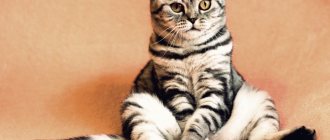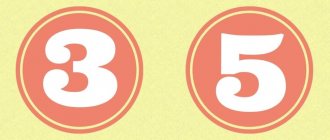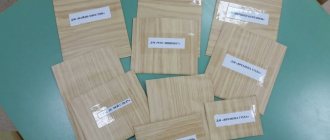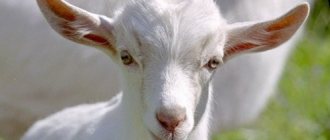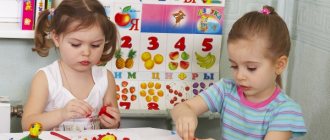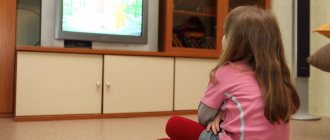Didactic games on the topic “Pets”
Transcript
1 Didactic games on the topic “Pets” “What will he give us?” (“What benefits do pets bring?” Goal: Development of logical thinking, teaching children to construct statements and reasoning. What will the cow give us? Milk, sour cream, cottage cheese, cheese, meat, skin. What will the pig give us? Meat, lard, skin. What will the goat give us? Meat, milk, six, cheese. What will the sheep give us? Wool, meat, skin. What will the rabbit give us? Fur, meat. What will the horse give us? You can ride a horse and carry loads. Meat, skin. What will chickens, geese, and ducks give us? Eggs, meat, feathers and fluff. “What does a livestock farmer feed his animals?” (“What Do Pets Eat”) Purpose: Development of memory and logical thinking. The horse is fed oats and grass. Goats, sheep, cows, rabbits are fed with grass by the Lost and Found Bureau (Cut-out pictures) Goals: Development of visual attention. Formation of logical thinking and phrasal speech. Cut cards with The teacher shows the children cards depicting parts of the animal's body. Children determine who lost it: This is the tail, the cow lost it. And these are the paws, the puppy lost them.
2 “What animals are hidden in the picture?” Goal: Development of attention, thinking, imagination. Cards with Invite the child to find and name the animals drawn in the picture. “Guess the animal by description” Goal: Developing the ability to describe animals and recognize them by description. Cards with Game progress: The teacher gives the children cards with Children do not show their cards to anyone. The teacher invites one child to describe the animal depicted in his picture, or to make a riddle about it. Other children must guess what kind of animal it is. “Collect a picture” Goal: Development of logical thinking, outlook, cognitive interest and speech activity. Cards with images of animals, cut into several parts. Progress of the game: Children are given game cards cut into 2, 3, 4 parts (in accordance with the age and abilities of the child). Having collected the picture, the child tells what animal he collected.
3 “Who will be who?” (“Who was who?”) Goal: Development of logical thinking, cognitive interest and speech activity of children. Cards with pictures of pets with babies. Progress of the game: The teacher asks the children, Who will be who when they grow up? Who was who? The foal will be (horse), The lamb will be (sheep, ram), The kid will be (goat, goat), The calf will be (cow, bull), The piglet will be (pig), The little rabbit will be (rabbit), Purpose: Development of attention, thinking, Imagination , the ability to compare objects by presentation. Cards with Game progress: Invite the child to find and name the animals drawn in the picture. “Whose silhouette?” Game "Who's the boss?" Goal: Development of visual attention. Formation of logical thinking and phrasal speech. Cards with images of animal body parts.
4 Progress of the game: the teacher shows pictures with parts of animals, you need to answer the questions “Whose tail?”, “Whose head?”, “Whose horns?”, “Whose hooves?”, “Whose udder?”. Game "Gather the Family." Goal: Formation of logical thinking and phrasal speech. Formation of new words from different stems. Cards with Game progress: on the table there are pictures depicting animals living on a farm and pictures depicting baby animals - Place the animals of the same family next to each other and tell who is standing next to whom. “Give me a word” Purpose: To consolidate the names of domestic animals and their cubs. Learn to construct reasoning statements. Forming plural nouns Pictures of pets. Progress of the game: Herd (many horses), Herd (many cows), Flock (many sheep), Pack (many dogs). “Who is which?” Goal: Consolidate knowledge about domestic animals and their cubs. Develop coherent speech. Pictures of pets. Progress of the game: You need to choose a sign for the nouns.
5 The foal is small, helpless, timid, defenseless, weak, cute. The puppy is playful, lively, active, curious, angry. The kid is stubborn, timid, beautiful, affectionate, gray. The pig is playful, pink, fat, cheerful, small, funny. The little rabbit is long-eared, gray, fluffy, funny, timid. The lamb is white, timid, cowardly, curly, fluffy, cute. The calf is affectionate, stubborn, playful, clumsy, and playful. “Tell about a pet” Goal: Consolidate knowledge about domestic animals and their babies, develop children’s communication skills, teach them to write a coherent story based on a series of pictures. reference picture Game progress: Make up a descriptive story about the animal based on the plan picture.
Summary of GCD in the 2nd junior group: Wild animals
GCD in the second junior group of kindergarten
Objectives: Educational:
To consolidate children's knowledge about wild animals, their appearance, and the peculiarities of their habits.
Fix the names of the cubs. Specify the name of the dwelling. Consolidate knowledge about basic geometric shapes (circle, square, triangle); about the primary colors (red, blue, yellow, green) and shade - gray. Developmental:
Develop coherent dialogical speech, the ability to coordinate different parts of speech.
Develop attention, memory, thinking. Develop children's creative abilities; Ability to work neatly and cleanly with paints. Educational:
Foster love for the world around us;
Feeling of compassion, desire to help; Cultivate neatness and cleanliness. Equipment:
“Forest” decoration, supplies of squirrels and mushrooms. Slideshow on the projector “Inhabitants of the Forest” For each child, a landscape sheet with the image of a white hare, gray gouache paints, cotton swabs, napkins.
Progress of activities
V.: What a good day today, guests have come to us, let's say hello the way we know how: “Hello, palms - clap, clap, clap. Hello, legs - top, top, top. Hello, cheeks - splash, splash, splash. Round cheeks - splash, splash, splash. Hello, sponges - smack, smack, smack. Hello, teeth - click, click, click. Hello, my nose is bi, bi, bi. Hello, dear guests - hello. Mail: “Come urgently, help urgently! Miracles happen, we cannot divide the forest. The wizard scared us, he bewitched us all. We have forgotten who we are, what we should drink and what we should eat. Help us out, come and make peace between us urgently!” Forest inhabitants. Q: What are the names of the animals that live in the forest? (wild) Q: What wild animals do you know? Q: Why are they called wild? V.: some wizard bewitched all the animals, now they don’t know who they are, what they should eat, where to live, and most importantly, they don’t recognize their cubs. They ask us for help, shall we help? Q: But what can you use to go into the forest? Let's remember what types of transport we know. V.: They travel long distances by plane, the train travels on rails, they sail on the sea by ship, few people can fit in the car. Q: Are there many of us or few? Q: There are a lot of us, and the forest is not far, what can we all ride at the same time? V.: To go by bus, you need to buy tickets and sit in the place where the same figure of the same color is depicted (geometric shapes are glued to the chairs: a square, a circle and a triangle in red, yellow, blue and green colors) An inspector comes in and checks randomly tickets. The song “Bus” by V. sounds: it seems that we have arrived, listen to how the birds sing, how it smells in the forest. It’s very beautiful here, but I don’t see a single forest dweller. The animals are probably very confused, because they have forgotten who they are. 1 slide. Bear.
- who is this? -Tell me, children, what kind of bear is it? (big, brown,
kind, he has powerful paws, small ears) - what is the name of the cub? -What does he like to eat? - but in winter there is no honey and berries, what does the bear do? -Where does he sleep? 2 slide. Bear in a den.
V.: Oh, look, under the bush, under the bush there is Someone with a red tail. Who do you think it is? , 3rd slide Fox.
Q: Look at the fox and tell me what it is like. The fox is red, beautiful, cunning. She has a fluffy, long tail. She is often called plutovka, which means a deceiver. The fox does not change its coat; it is red both in summer and winter. -What is the name of the cub? 4 slide. Nora.
There is a fox's house under the bush. What is the name of the fox's house? V.: The entrance to the hole is narrow, long, and inside the hole is spacious and comfortable. Q: Who knows why the fox needs such a fluffy tail? (cover tracks) V.: let’s show together how a fox walks and covers its tracks. Physical exercise. The fox walked through the forest, made song calls, the fox tore the stripes, the fox wove bast shoes, walked near the Christmas tree, and what did you find on the Christmas tree? Mushrooms? Q: Do mushrooms grow on the Christmas tree? Q: What grows on the Christmas tree? (cones and needles)Where do mushrooms grow? (on the ground) V.: then whose mushrooms are these? (squirrel reserves) Where is the squirrel itself? 5 slide. Squirrel
V.: here she looks at us and asks for help, because she has forgotten who she is. Come on, guys, we'll tell you about her. What kind of coat does a squirrel have? (red, fluffy) Ears, tail? What is a baby squirrel called? (little squirrel) What is the name of her house? (hollow) 6 slide. Squirrel in a hollow.
V.: squirrels make themselves a house high in a tree. Let's show together how high it is. (We stand on our toes) Q: Why do you think the squirrel’s house is so high? (so that other animals cannot get to her or her supplies) V.: All animals have their own houses: the bear has a den, the fox has a hole, the squirrel has a hollow, but where does the hare live? What kind of house does he have? V.: The bunny doesn’t have a house, he slept under a bush and ran away, so he runs fast because there is nowhere to hide. Slide 7 The hare is white.
V.: Here is the bunny, let's look at it together. What kind of ears, tail, fur coat does he have? V.: The hare is a real fashionista: in winter he wears a white fur coat, and in summer he wears a gray one. Why do you think? (to make it easier to hide) Oh, trouble! It’s already spring, but the hare still hasn’t changed his coat, we need help. Painting a white hare gray (using the “poking” method with cotton swabs) 8 slide . The hare is gray.
V.: Look, the hare is already gray, we helped him. Great job guys, well done! Oh, he's already galloped away. Slide 9 Wolf
V.: Another resident showed up. Gray, scary and toothy. Caused a commotion. All the animals ran away. Scared the animals... V.: tell me what he is like? Slide 11 Lair.
V.: The wolf also has a home, look at what it is like. His home is called a lair. Sad music sounds and a wizard appears. V.: wizard, what happened, why are you so sad? Wizard: Yesterday I accidentally bewitched all the animals in the forest. I can’t cast the spell back - I forgot the words. V.: Don’t worry, wizard, we have already helped all the animals. We reminded them who they are, where they live and what they like to eat. V.: Guys, let's tell the wizard what animals we helped. Wizard: Thank you very much, you helped me out so much. Who are you and where did you come from? (from kindergarten) Wizard: what are you doing there? Show how you can dance. Dance “Stamp, my foot” Wizard: my time has come to please you. Close your eyes. The wizard says special words and a huge candy appears. Q: How can we share one candy among everyone? The wizard once again asks you to close your eyes, casts a spell, and many small ones appear from the large candy. The wizard thanks for the help and leaves. V.: oh, guys, it’s already very late, it’s time to go back. The bus ride will be long, so we will return to the group by plane. V.: they started the engines, spread their wings and flew.
We recommend watching:
Summary of GCD for children of the 2nd junior group on the topic: Winter Summary of GCD cognition using ICT in the 2nd junior group. Journey to the autumn forest Lesson notes. Walk through the forest. Senior group About animal houses for preschoolers
Similar articles:
Conversation about the hare for older preschoolers
What can you tell children about a hedgehog?
A story about a squirrel for 1st grade children on the world around them
What can you tell children about the fox?
Conversation about the wolf. Senior - preparatory group
